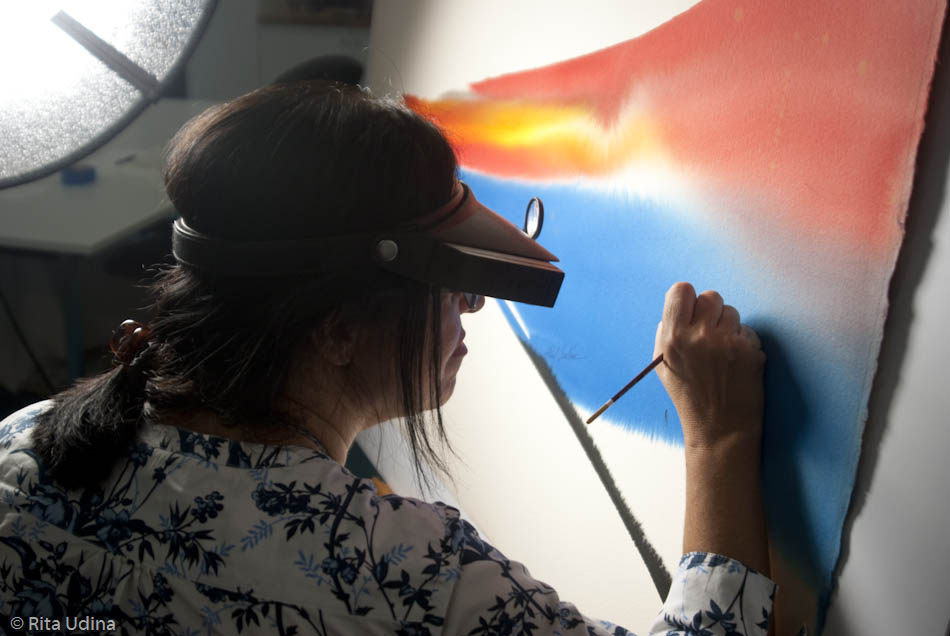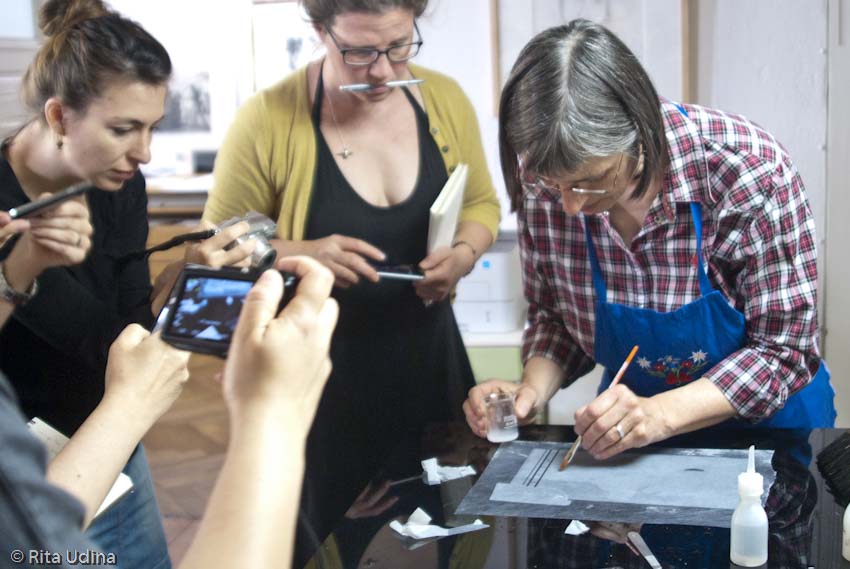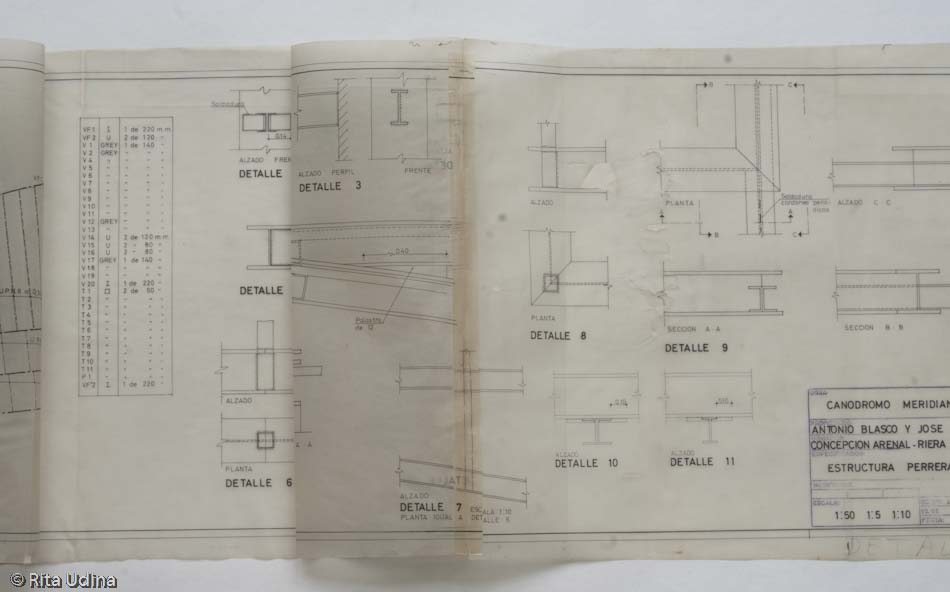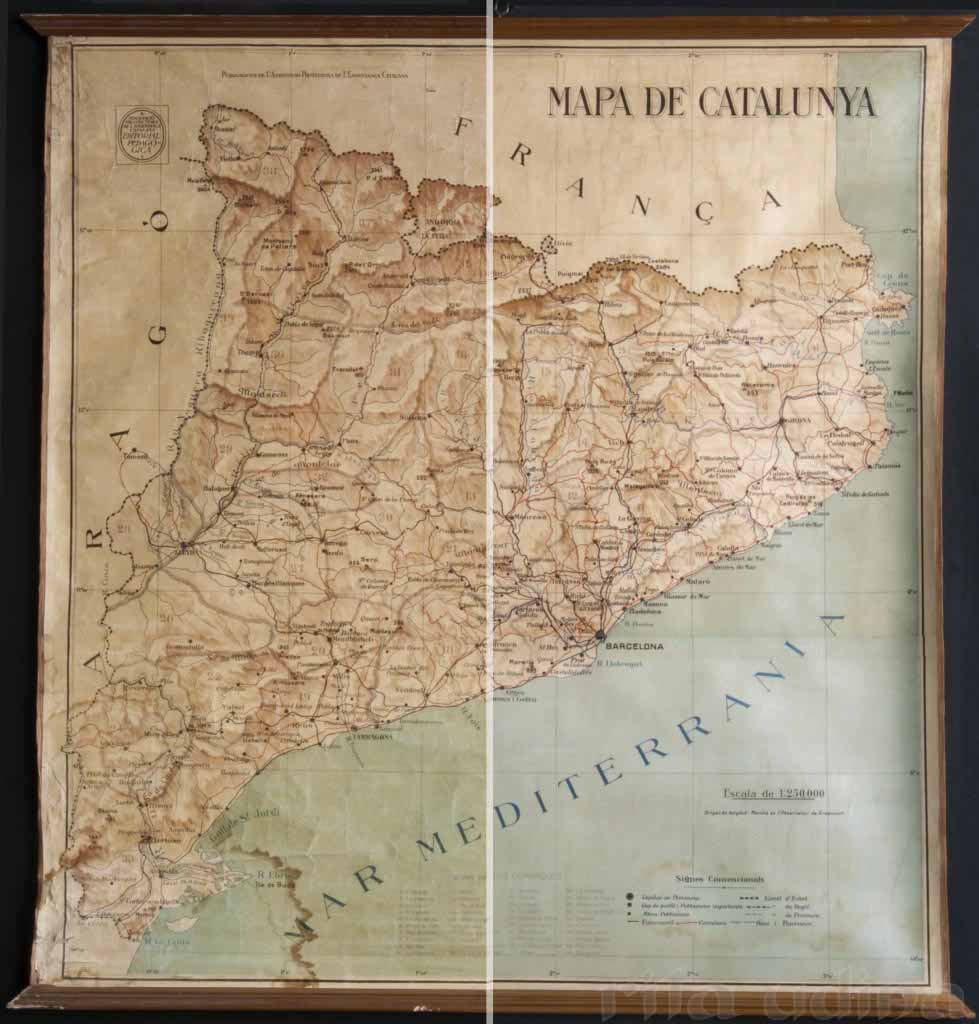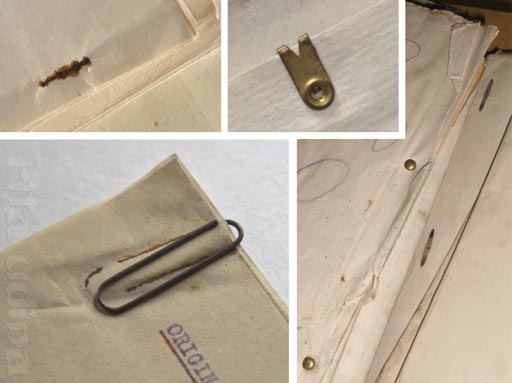MATERIAL
Type of support of the artefact
Find below the blog posts related to MATERIAL:
“Customized” conservation with Richard Wolbers
Fellows of joys and sorrows, conservators, here is why I am so excited with the "Cleaning workshop: Paper bathing/stain removal", given by Wolbers: The idea is to make every conservation treatment a kind of custom-made dress for each particular object with a minimal initial investment. He speaks about solvents, gels, surfactants, conductivity and pH. Nor in my wildest dreams had I imagined such a close, easy and useful chemistry. Thanks a lot Richard, we owe it to you.
Dürer: From old Europe to Palm Beach
Alligators, palm trees, luxury residences… [...]
This document will self-destruct in 30 secs!
Or how to remove pressure sensitive tapes, without removing them. We have spoken about bibliopaths, about misuses and how to eradicate its effects... But, what happens when the artefact itself causes its own degradation?
Tracing paper conservation, berliner style
I never enjoy anything as much as visiting other paper restoration studios, especially if they are private. They usually bear the imprint of a personal vocation, a personality which is barely present at institutional studios. I watch the space distribution, the tools, the jars... at Hildegard Homburger's studio. Is there a better way to nose around than becoming a berliner restorer for two days?
“Smart books” and bibliographic terrorism
Terrorists do not always carry explosives or mallets, nor they come from overseas, it may even be people in charge of collections. We ought to deal with them to safeguard "smart books": books intelligently made, such that no material interfere with each other, on the contrary, they create formidable synergies. Each one has its peculiarities, its beauty and its function. They represent a compendium of technology, art, society and culture at the time and place in which they were created.
Posters conservation: virtual inpaint vs “virtuous” retouching
The bike riders from Sants reached my studio squeaking, rather than cycling! Tears, foxing, discolouration, brittleness, acidity... All these damages have been carefully restored in order to let the splendorous riders finish line at the Municipal Archive of Barcelona. They are almost centenarian... and yet they ride wild along the repository! I'll explain which beauty and health treatments these illustrated posters have passed through
Bibliopaths: The case of the lacquer binding
Are we supposed to fear bibliopaths? Or maybe we should give them an award? Who are they? Atention! Because they can be among us, or we might even be one of them?! I invite you to read the Case of the Lacquer Binding to know more about them
I have mold! (…or is it foxing?)
Foxing is mould... or not? One of the main concerns in archives and libraries is the presence of mould. Not surprisingly: it develops without fanfare, and when it is detected, an irreversible loss of information might have taken place. Before pulling your hair out, you should identify whether the symptoms actually reveal fungal activity, or not. Not an easy assessment.
Flattening under tension on paper and parchment conservation
Flattening under tension may be an interesting alternative to the press and very useful when a selective flattened is required: dry seals, wax seals or even parchment and ink manuscripts. Explanation based on the recently discovered oldest documents from Sants-Montjuïch archive.
Choirbooks, and much more, at the Spanish National Library
Led by Luis Crespo and Arsenio Sanchez, restorerss in the National Library, we visit the fascinating world of book illuminated miniatures, choir books, manuscripts ... Latest technological resources, ancient tradition, and above all their experience and knowledge, allow the recovery of these bibliographic jewels exhibited now at the National Library of Spain.
New conservation methodolgy to retrieve lost flexibility to brittle tracing paper
Approach to a new methodolgy to retrieve the lost flexibility to brittle paper. Tracing paper -so usual among technical drawings- have in common their transparency, but there are significant differences in the process to make them. The properties and behavior will be very different then. Impregnated papers, for an instance, were applied oils or varnishes to provide them translucency. Explanation restoration of several drawings in which the varnish was removed to replace it later.
Who says BluTack® is ideal for papers?
BluTack in papers? Never! Restoration of a document from industrial heritage with a stain from this adhesive, property of the Municipal Archive (Barcelona)
Damned “sellotapes”!
Which damages cause sellotapes? Can we release documentary heritage from these fatty strips? Explanation for the degradation mechanisms of this historic "remedial" tapes that we can find in documents of all kinds, and restoration possibilities in each case.
Books washing-machine and new conservation methods for leather bindings
From the books washing machine to new methodologies for leather bindings restoration, a visit to Domènec's restoration studio is always a great pleasure!
Conservation of school poster from spanish civil war period
This map represents the typical scholar posters: with its wooden slats to roll and hang, lined on the back. It was very common to varnish them with shellac to waterproof and protect them from abrasion. This one was made of two pieces of printed paper, sticked together along the central horizontal stripe. It is from 1936, spanish civil war was barely breaking. Removing the old varnish has allowed to repare other minor damages: tears, gaps and wrinkles. But most important is that the new varnish is not oxidizing nor yellowing. As it is very flexible it will not crack in the future.
Nanotechnology & chemical gels applied to paper conservation
What are nanoparticles and chemical gels? Latest technological advances in restoration of archive material is about nanotechnology and chemical gels and so it is studied in the paper & books section of the IPCE.
- Minimal intervention on “Serra & Balet” documents GalleryClips, grapes i altres elements potencialment nocius Clips, staples and potential damages Clips, grapas y potenciales patógenos" data-title="Clips, grapes i altres elements potencialment nocius Clips, staples and potential damages Clips, grapas y potenciales patógenos" data-caption="">
Minimal intervention on “Serra & Balet” documents
Standard treatment of minimal intervention on documentation with slight damages: Disinfection, removal of clips and staples, consolidation and folder to fit.
TBO: industrial heritage documents rescued from being lost
[untranslatable!!!] ¿Un tresor documental trobat [...]
Silver-gelatine photographs conservation
New Elimination Procedure for Silver Mirroring. Silver mirroring is a type of deterioration that appears in most gelatin developing-out paper (DOP) historical photographs and black-and-white films. Its treatment involves so many problems that it has often been ruled out. In this article we present a new and simple elimination procedure, which is efficient and offers stable results in the long term. The study of the causes of the formation of silver mirroring sheds light on aspects that had been little explained so far: the fact that this type of deterioration always appears on the surface of the image leads us to consider a mechanism of transport of electrical charges.
Touch and “my crumpled ADLAN tracing papers”
How we restorers motivate with crumpled tracing papers, beautiful papers... This restorer is thrilled with "crumpled ADLAN tracing papers" from CoAC archive, which went through my hands some years ago, and invites you to participate in its digitization.
Categories
ARTEFACT
archive or library
book
book structures
bundle
headband
hollow back
limp-vellum binding
locks
sewing
tight back
document
seal
lacquered seal
printed stamp (see TECHNIQUE)
drawing
manuscript
photograph
albumen
daguerreotype
glass plate
silver gelatine
plans, maps, architectural or technical drawings
maps
plans
poster
DAMAGES
acidity / oxidation
bibliopath - graphopath
Bookbugs (pests & paper eaters)
insects
silverfish
woodworm
microorganisms
mold
disaster
flood
foxing
losses, gaps
pressure sensitive tapes
silver mirroring
structural
wrinkles
MATERIAL
fabric
cotton
silk
velvet
glass
leather
parchment
metal
paper
coated paper (art paper)
Kraft paper
laid paper
rag paper
tracing paper
impregnated paper
onion skin paper
Washi
wood pulp paper
plastic
cellulose acetate
polyethylene terephthalate (PET)
Polypropylene (PP)
wood
PRODUCTS
adhesives
natural
shellac
rubber (natural)
starch paste
synthetic adhesives
Filmoplast®
Paraloid B72
rubber (synthetic)
Tylose® (MHC)
gels
agarose
chemical gel
hydro-gels
Klucel®
organo-gels
physical gels
Velvesil Plus
xanthan gel
nanoparticles
solvent
benzyl alcohol
ciclometicone
diethyl carbonate
dimethyl sulfoxide (DMSO)
polyethylene glycol (PEG)
surfactants
TECHNIQUE
ballpoint pen
collage
felt-tip pen
gouache
graphite (pencil)
ink
print
engraving
etching
lithograph
woodcut
printed stamp
reproduction
diazotype
watercolour
THEORY on cons. & rest.
TOOLS, MACHINES
TREATMENTS
bleaching
light bleaching
cleaning
stain removal
surface cleaning
tape removal
varnish removal
wet cleaning
deacidification
digitization
flattening
flattening under tension
housing (storage)
box
folder
four flaps envelopes
inpainting
mimetic in-painting
neutral colour in-paint
mould treatment
preventive conservation
climate (HR, temp.)
re-binding
reinforcement - consolidation
backing with fabric
Infilling
leafcasting
ink fixing
lining
sizing
tear repair
varnishing





